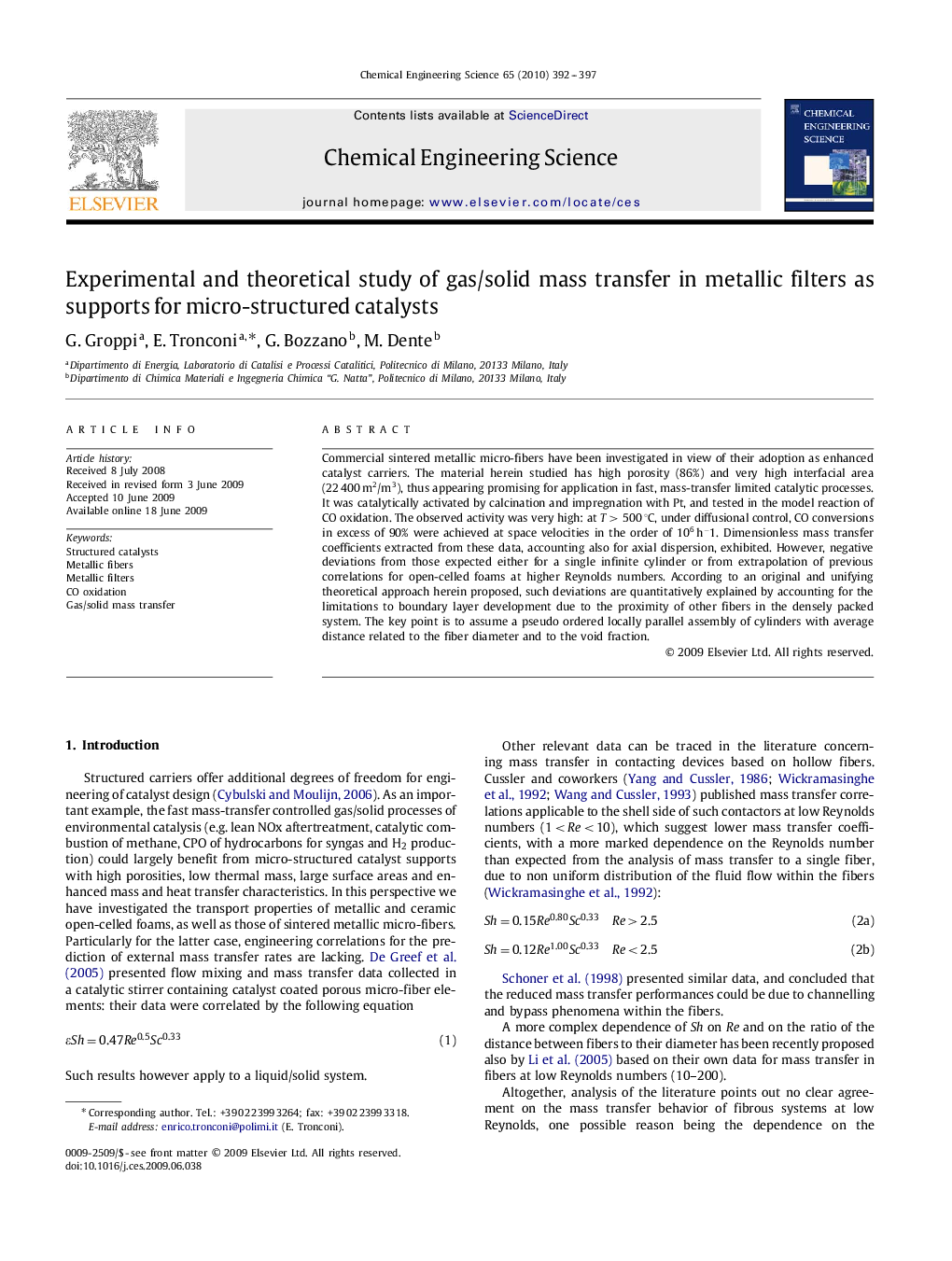| Article ID | Journal | Published Year | Pages | File Type |
|---|---|---|---|---|
| 157717 | Chemical Engineering Science | 2010 | 6 Pages |
Commercial sintered metallic micro-fibers have been investigated in view of their adoption as enhanced catalyst carriers. The material herein studied has high porosity (86%) and very high interfacial area (22 400 m2/m3), thus appearing promising for application in fast, mass-transfer limited catalytic processes. It was catalytically activated by calcination and impregnation with Pt, and tested in the model reaction of CO oxidation. The observed activity was very high: at T>500 °C, under diffusional control, CO conversions in excess of 90% were achieved at space velocities in the order of 106 h−1. Dimensionless mass transfer coefficients extracted from these data, accounting also for axial dispersion, exhibited. However, negative deviations from those expected either for a single infinite cylinder or from extrapolation of previous correlations for open-celled foams at higher Reynolds numbers. According to an original and unifying theoretical approach herein proposed, such deviations are quantitatively explained by accounting for the limitations to boundary layer development due to the proximity of other fibers in the densely packed system. The key point is to assume a pseudo ordered locally parallel assembly of cylinders with average distance related to the fiber diameter and to the void fraction.
